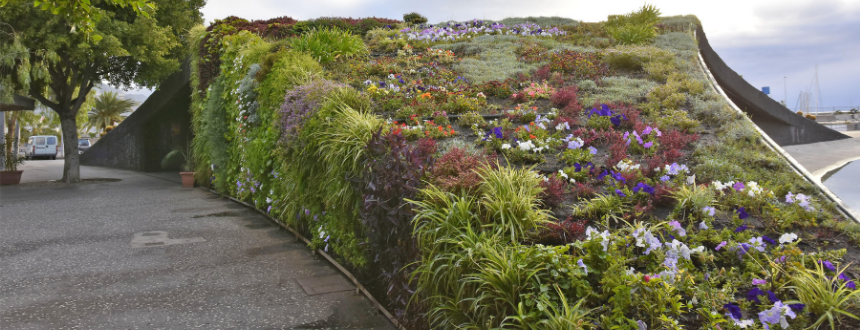
Sustainable Oasis: Transformative Rooftop Green Roofs
Rooftop green roofs are emerging as a powerful and sustainable urban design trend, transforming conventional cityscapes into flourishing havens of environmental responsibility. These verdant installations not only enhance the aesthetic appeal of buildings but also contribute significantly to ecological balance and the well-being of urban communities.
Green Roofs: A Breath of Fresh Air in Urban Spaces
In the heart of bustling urban environments, where concrete dominates, rooftop green roofs stand as a breath of fresh air. These living ecosystems not only provide a visual reprieve from the monotony of gray but also play a crucial role in improving air quality. By absorbing carbon dioxide and releasing oxygen, green roofs contribute to a healthier atmosphere for city dwellers.
Biodiversity Flourishes Above
Rooftop green roofs act as elevated ecosystems, fostering biodiversity in unexpected places. The introduction of native plants and vegetation creates a habitat for birds, insects, and other wildlife, establishing a delicate balance that is often lost in urban sprawls. It’s a testament to the potential of harmonious coexistence between nature and urban development.
Cooling the Urban Heat Island Effect
Urban heat islands, characterized by elevated temperatures in densely populated areas, pose a significant challenge. Rooftop green roofs combat this effect by providing a natural cooling mechanism. The vegetation absorbs sunlight, reducing heat absorption by the building and lowering ambient temperatures. This sustainable approach aids in creating more comfortable urban environments.
Energy Efficiency and Insulation
Beyond their aesthetic and ecological benefits, green roofs contribute to enhanced energy efficiency. The insulation provided by the vegetation layer helps regulate indoor temperatures, reducing the need for excessive heating or cooling. This not only translates into cost savings for building owners but also aligns with broader sustainability goals.
Stormwater Management Solutions
One of the often-overlooked advantages of rooftop green roofs is their ability to manage stormwater effectively. The plants and soil act as natural filters, capturing rainwater and reducing runoff. This mitigates the strain on urban drainage systems, minimizes the risk of flooding, and protects water quality by preventing pollutants from reaching water bodies.
Rooftop Green Roofs: Aesthetic Appeal with a Purpose
The integration of green roofs goes beyond functionality; it adds a layer of aesthetic appeal to the urban landscape. The juxtaposition of lush greenery against the urban backdrop creates a striking visual contrast, turning mundane rooftops into vibrant canvases. It’s an architectural choice that marries beauty with purpose.
Community Well-being and Recreation Spaces
Green roofs also contribute to community well-being by providing recreational spaces in the midst of the urban jungle. These elevated gardens offer residents and workers a retreat, fostering a sense of tranquility and connection with nature. Rooftop green spaces become communal areas where people can unwind, socialize, and enjoy a slice of the outdoors.
Rooftop Green Roofs at LucasBarrios.com
For those intrigued by the transformative potential of rooftop green roofs, explore more at LucasBarrios.com. This curated platform delves into the world of sustainable architecture and green initiatives, providing insights into the most innovative rooftop projects worldwide. Discover how green roofs are reshaping urban landscapes and contributing to a more sustainable future.
Conclusion: Nurturing Cities with Nature
In conclusion, rooftop green roofs symbolize a transformative approach to urban living. Beyond their visual allure, these installations play a vital role in fostering environmental sustainability, biodiversity, and community well-being. As cities evolve, integrating nature into the built environment becomes not just a choice but a necessity, and rooftop green roofs stand as shining examples of this harmonious coexistence.




